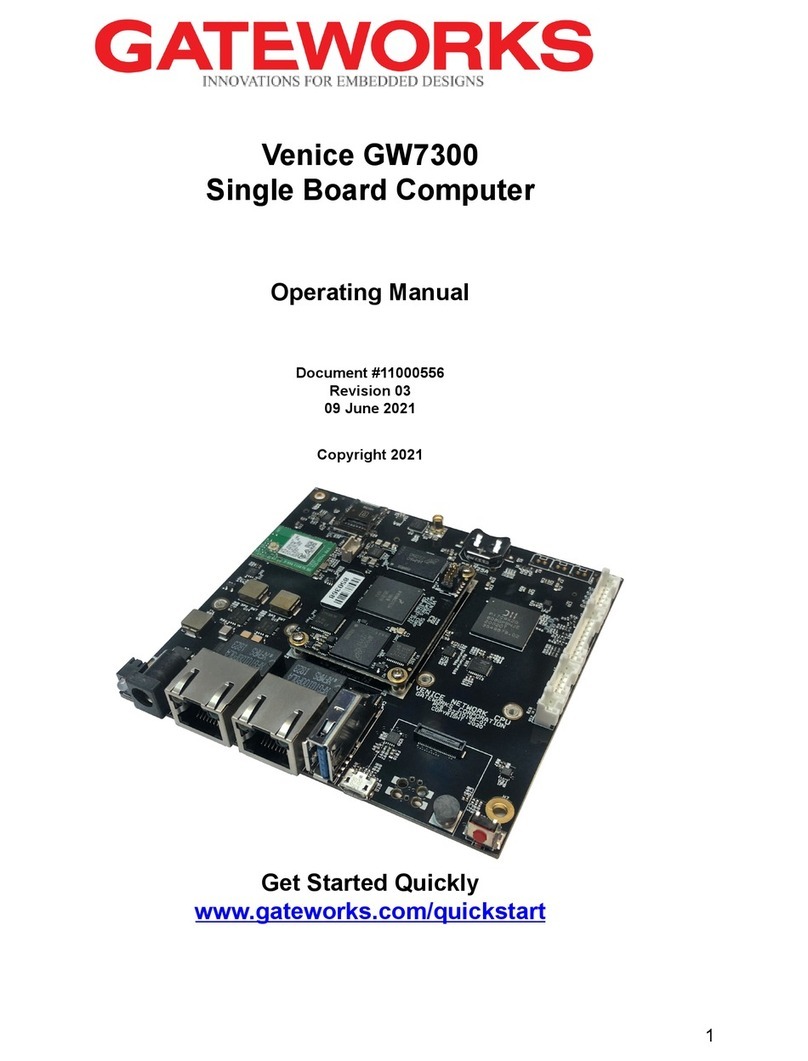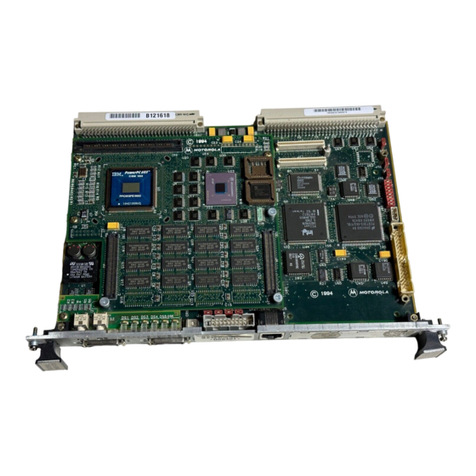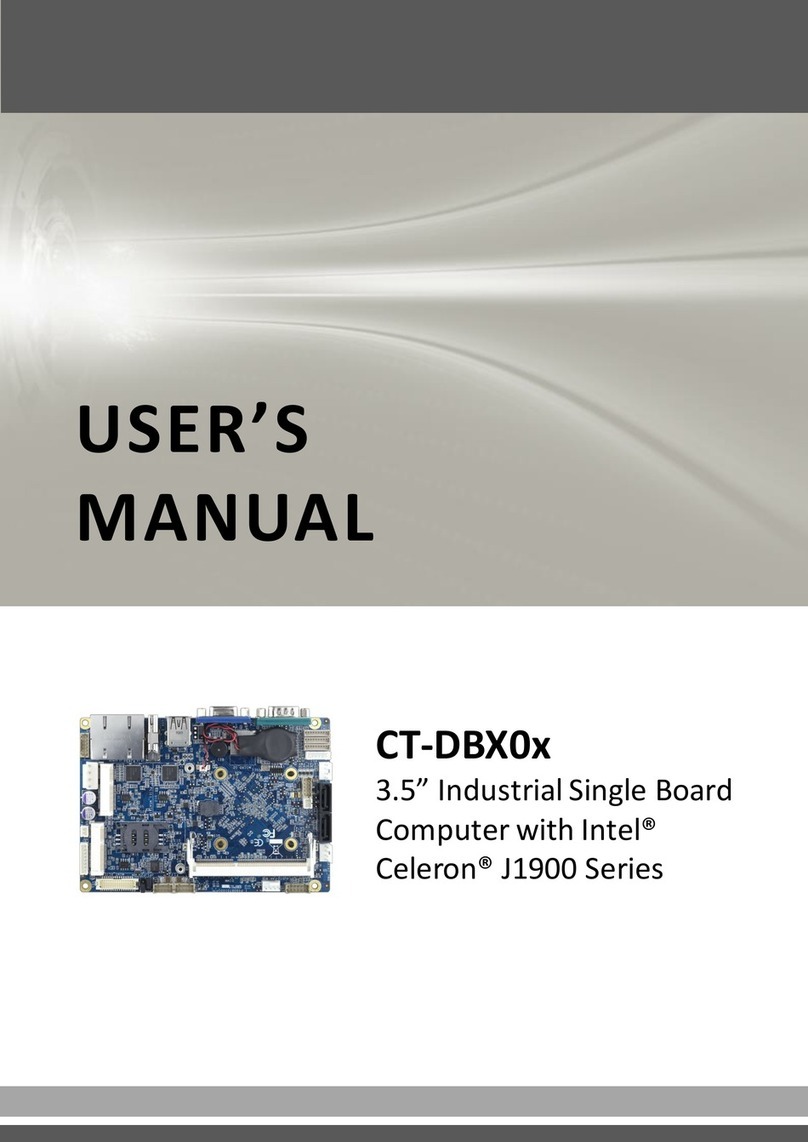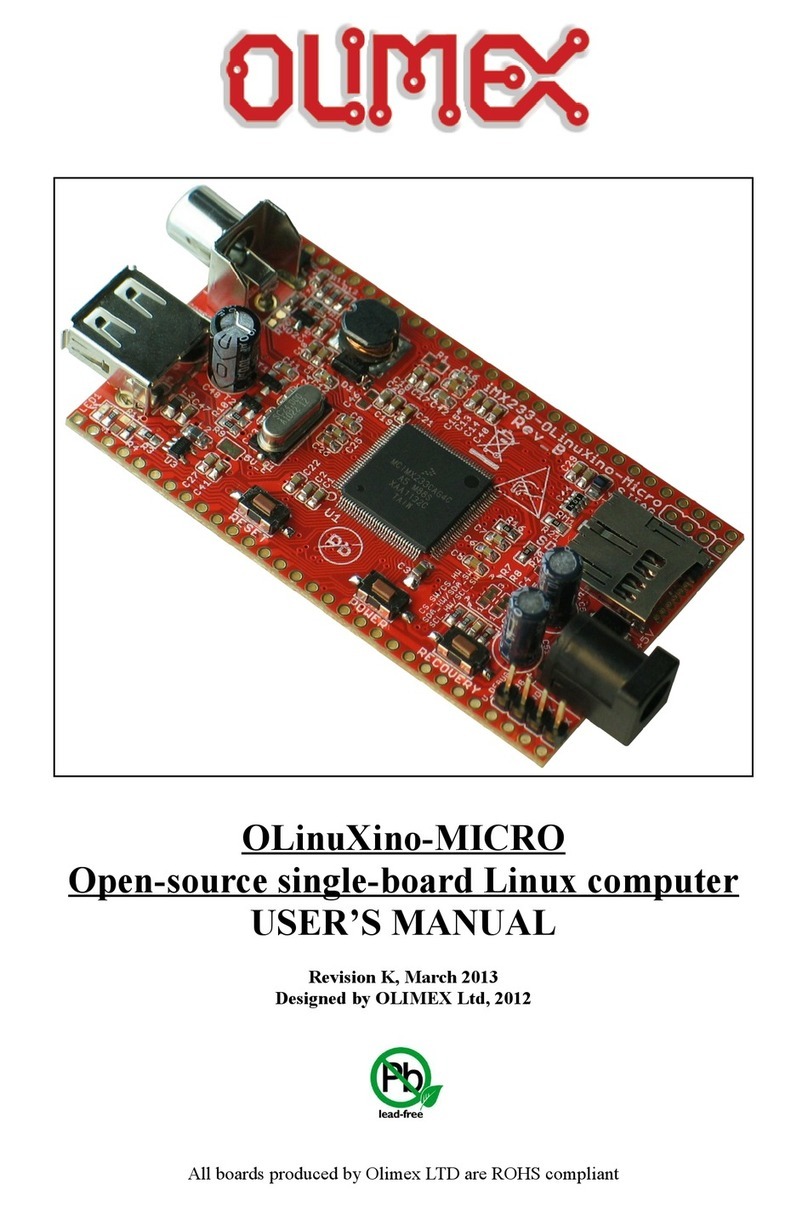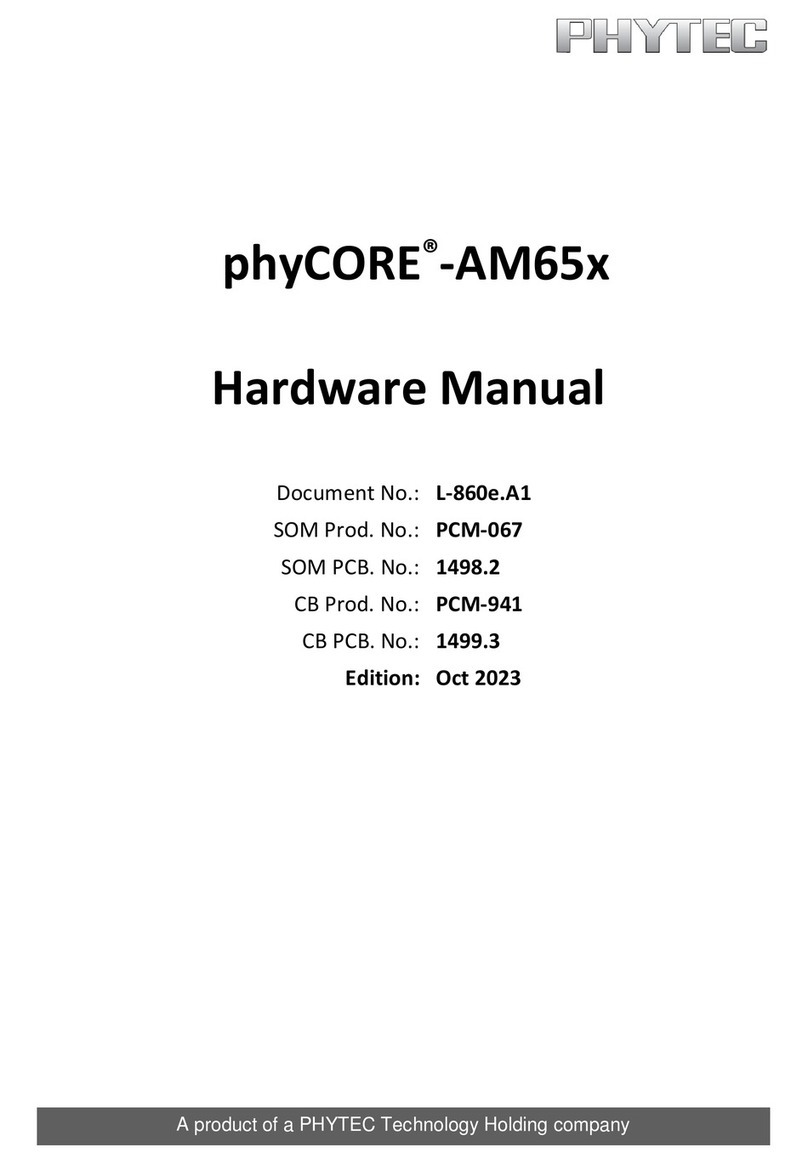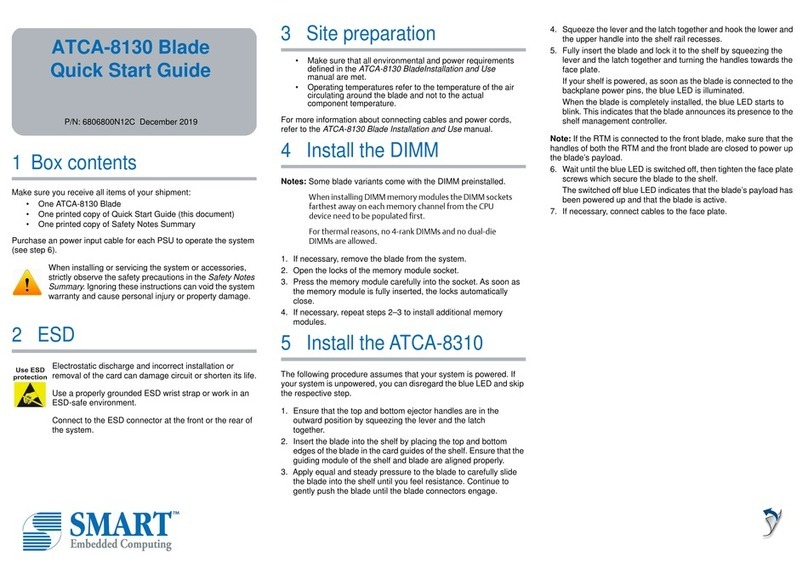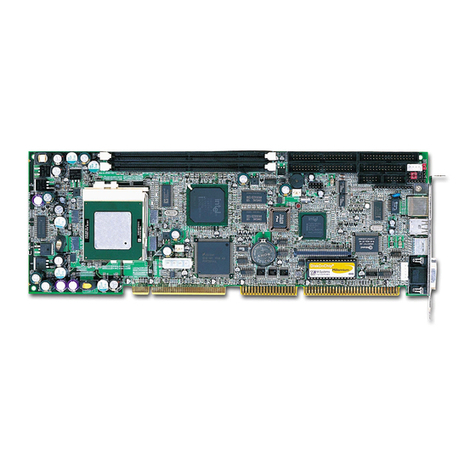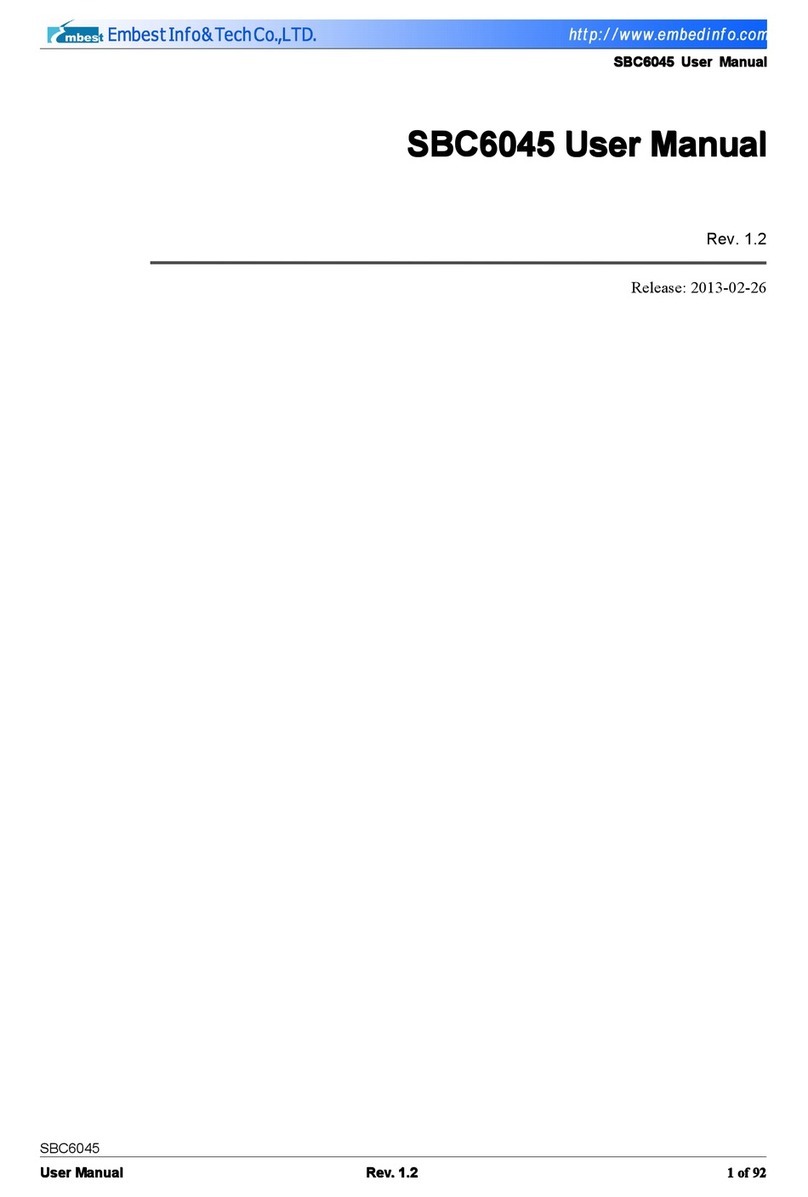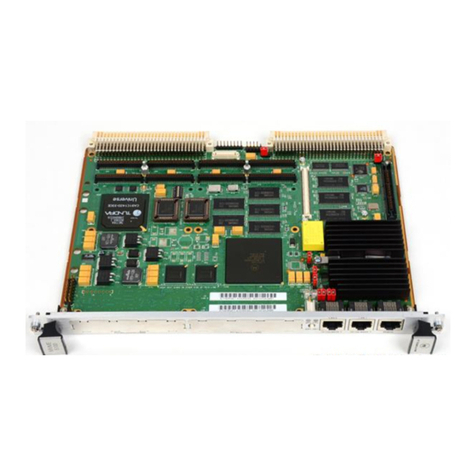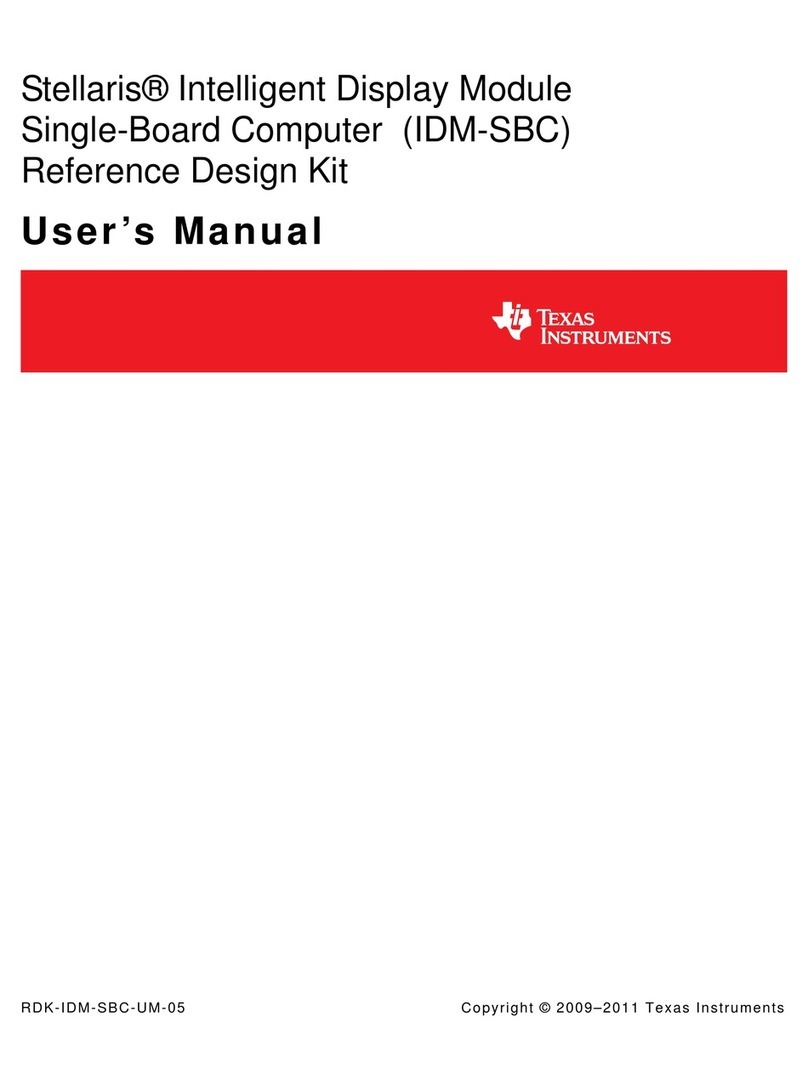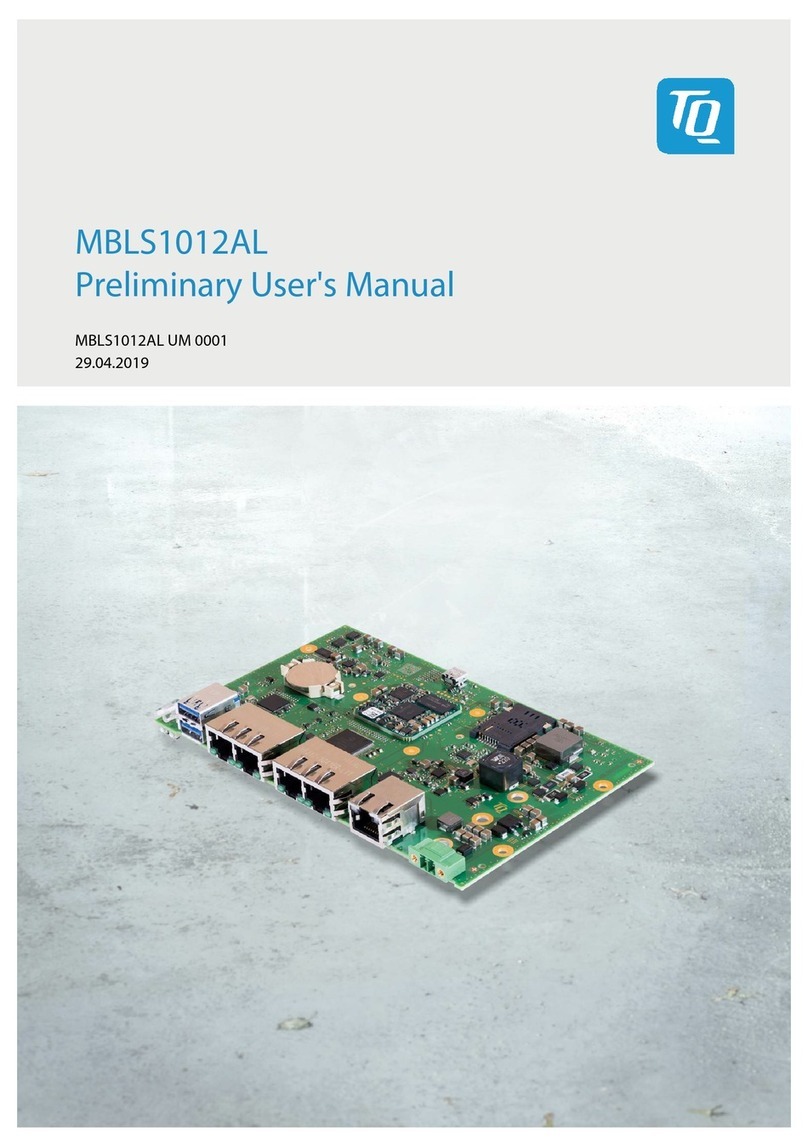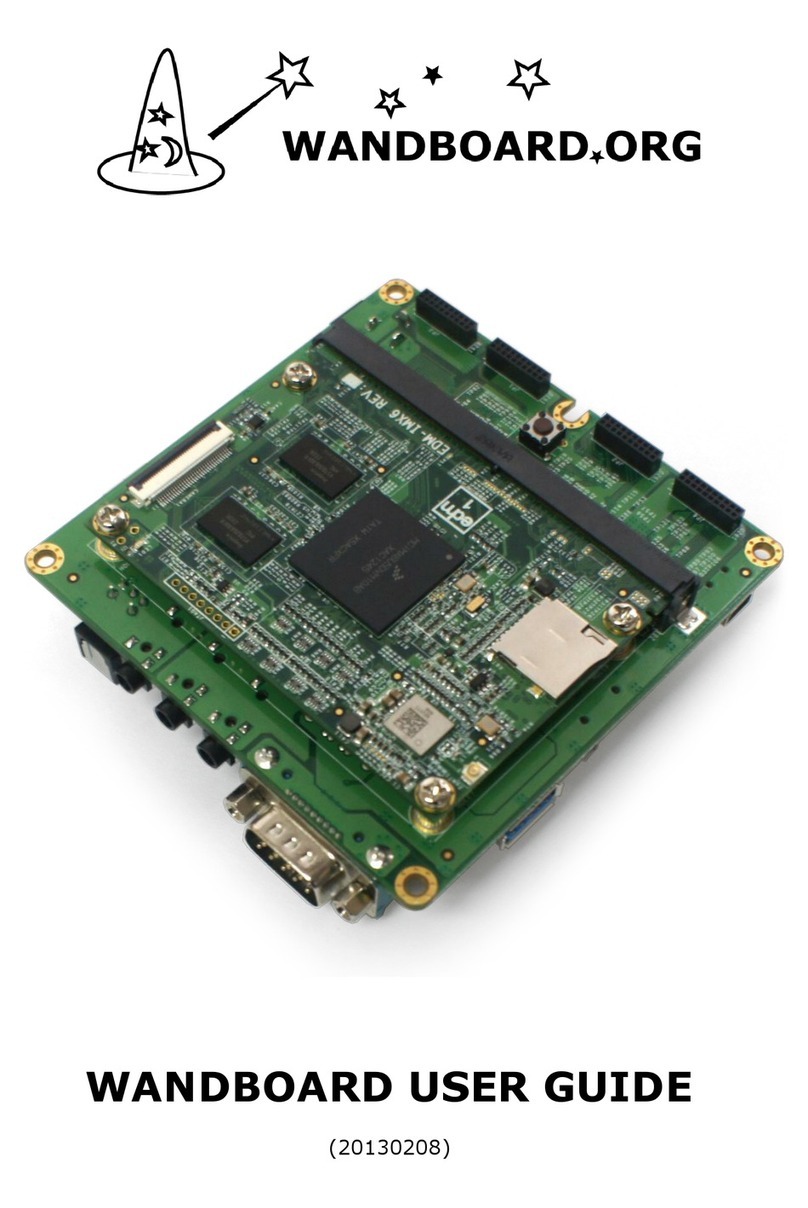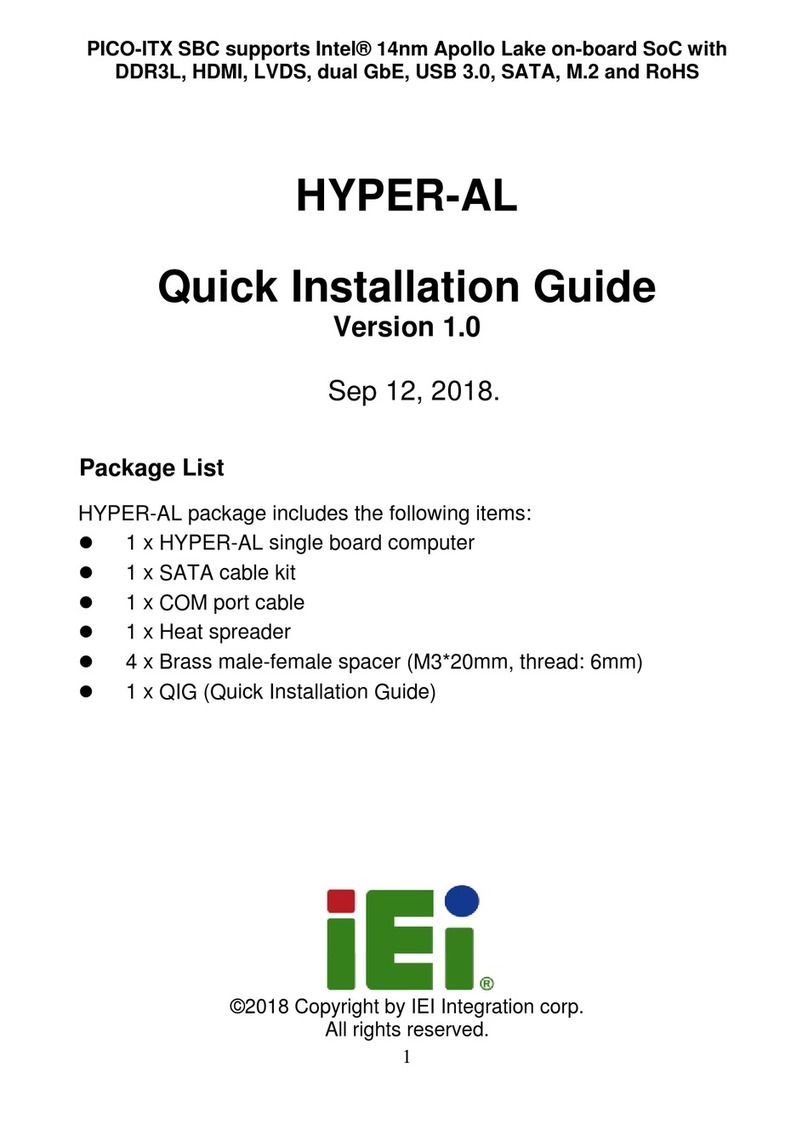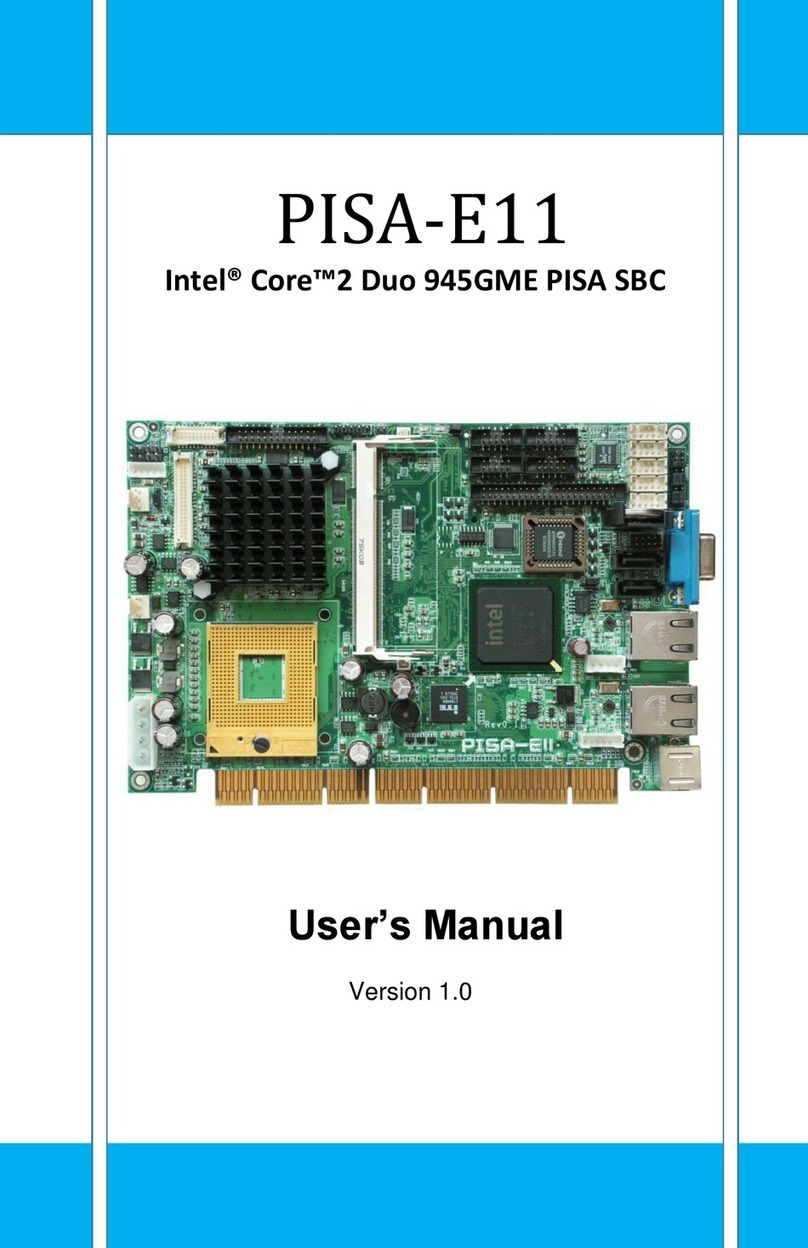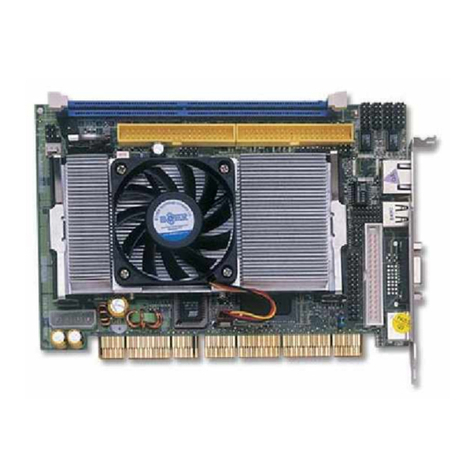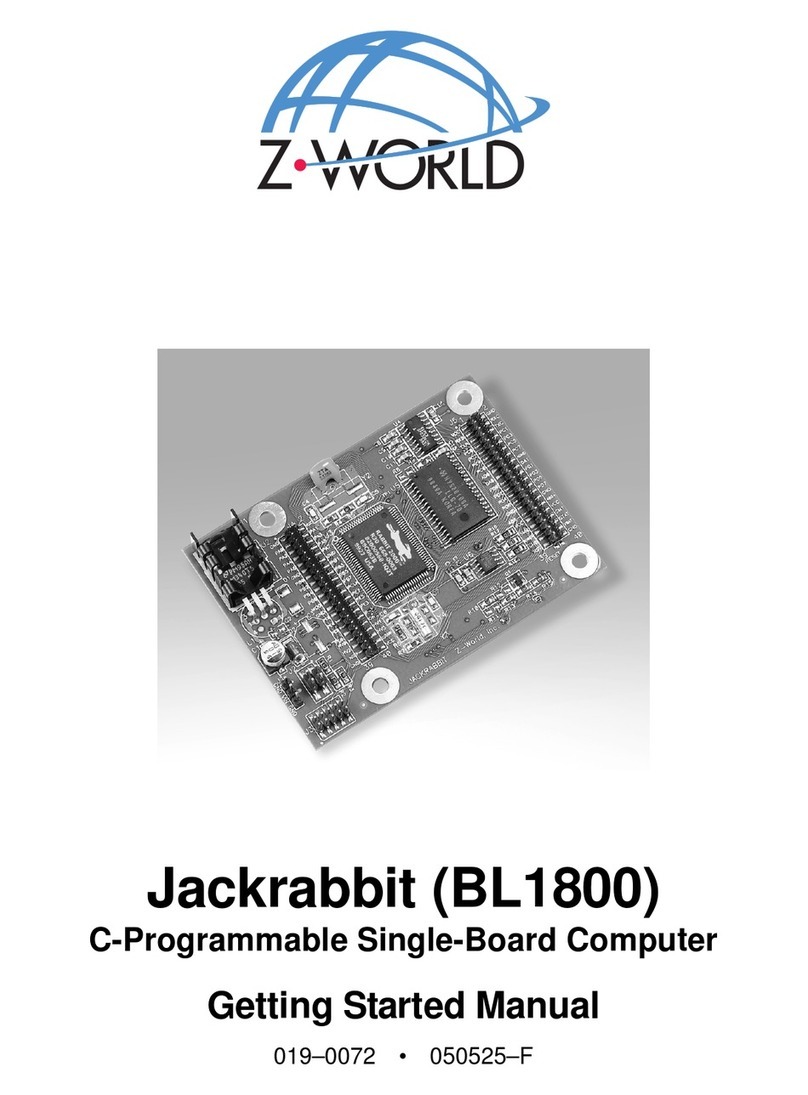Ebyte E51-470NW16S User manual

Chengdu Ebyte Electronic Technology Co., Ltd. E51-470NW16S USER Manual
0
E51-470NW16S User Manual
EFR32FG25 470/510MHz SMD SoC Module

Chengdu Ebyte Electronic Technology Co., Ltd. E51-470NW16S USER Manual
Copyright ©2012–2023,Chengdu Ebyte Electronic Technology Co., Ltd.
1
Catalog
Disclaimer and Copyright Notice....................................................................................................................................................... 2
Chapter Ⅰ Overview................................................................................................................................................................................... 3
1.1 Brief Introduction...................................................................................................................................................................3
1.2 Module Features..........................................................................................................................................................................3
1.3 Application................................................................................................................................................................................... 4
Chapter II Specification parameters..............................................................................................................................................5
2.1 Limiting parameter...................................................................................................................................................................5
2.2 Electrical parameter.............................................................................................................................................................. 5
2.3 Hardware parameter...................................................................................................................................................................6
Chapter III Mechanical dimensions and pin definition...................................................................................................... 7
Chapter IV basic operations............................................................................................................................................................9
4.1 Hardware Design..........................................................................................................................................................................9
4.2 Software writing..................................................................................................................................................................... 10
Chapter V basic application.............................................................................................................................................................. 10
5.1 Basic circuit wiring diagram......................................................................................................................................... 10
5.2 J-Link program download/debugging cable diagram.............................................................................................11
Chapter Ⅵ FAQ............................................................................................................................................................................................ 11
6.1 The transmission distance is not ideal................................................................................................................ 11
6.2 Module easy to damage......................................................................................................................................................... 11
6.3 The bit error rate is too high.................................................................................................................................... 12
Chapter Ⅶ Welding operation instruction................................................................................................................................12
7.1Reflow temperature...................................................................................................................................................................12
7.2 Reflow welding diagram....................................................................................................................................................... 13
Chapter Ⅷ Related models...................................................................................................................................................................13
Chapter Ⅸ Antenna Guide..................................................................................................................................................................... 14
9.1 Antenna Recommendation....................................................................................................................................................... 14
Chapters X Batch packaging methods..............................................................................................................................................15
Revision History........................................................................................................................................................................................15
About us ............................................................................................................................................................................................................15

Chengdu Ebyte Electronic Technology Co., Ltd. E51-470NW16S USER Manual
Copyright ©2012–2023,Chengdu Ebyte Electronic Technology Co., Ltd.
2
Disclaimer and Copyright Notice
The information in this document, including the URL addresses for reference, is
subject to change without notice. this document is provided "as is" without warranty
of any kind, including any warranty of merchantability, fitness for a particular
purpose, or non-infringement, and any warranty that any proposal, specification, or
sample is referred to elsewhere. This document is provided without warranty of any
kind, including any warranty of merchantability, fitness for a particular purpose or
non-infringement, and any warranty mentioned elsewhere in any proposal, specification
or sample. No license, express or implied, to use any intellectual property is granted
herein by estoppel or otherwise.。
The test data in this document are obtained from Ebyte's laboratory tests and the
actual results may vary slightly.
All trade names, trademarks and registered trademarks mentioned in this document
are the property of their respective owners and are hereby declared.
The final explanation right belongs to Chengdu Ebyte Electronic Technology Co.,
LTD。
Notes :
Due to product version upgrade or other reasons, the contents of this manual may change. Chengdu Ebyte Electronic Technology
Co., LTD, Ltd. reserves the right to modify the contents of this manual without any notice or prompt. This manual is only intended
as a guide for use. Chengdu Ebyte Electronic Technology Co., LTD. makes every effort to provide accurate information in this
manual. However, Chengdu Ebyte Electronic Technology Co., LTD. does not warrant that the content of this manual is completely
error-free, and all statements, information and recommendations in this manual do not constitute any express or implied warranty。

Chengdu Ebyte Electronic Technology Co., Ltd. E51-470NW16S USER Manual
Copyright ©2012–2023,Chengdu Ebyte Electronic Technology Co., Ltd.
3
Chapter Ⅰ Overview
1.1 Brief Introduction
The E51-470NW16S is the ideal SoC (System on chip)
hardware module for long distance, low power
transmission, and it is equipped with Silicon Labs'
EFR32FG25 series chip, which can achieve wireless
broadcasting up to 0.3 to 2.5 kilometers in dense urban
canyon environments with minimal data loss. It also
supports the orthogonal Frequency division
multiplexing modulation (OFDM) technology introduced
in Wi-SUN Field Local Area Network (FAN), which can
achieve high data bandwidth of up to 3.6 Mbps. As data
rates increase, the large networks required for
applications such as smart cities and smart utilities
can be realized, where nodes can be in the thousands.
The E51-470NW16S wireless communication module has
small dimensions, rich interface resources, and
supports users' secondary development, which can be
widely used in the Internet of Things industry。
1.2 Module Features
Low power wireless system on chip
High-performance 32-bit 97.5MHz ARM Cortex®-M33
with DSP instructions and floating-point unit for
efficient signal processing
Up to 1152 kB of flash program memory
RAM Up to 256 kB of data memory
Up to +16 dBm transmit power
A wide selection of MCU peripherals
Leads to up to 35 generic I/O pins with
output state hold and asynchronous interrupt
capabilities
analog-to-Digital Converter (ADC)
12-bit@1 Msps
[email protected] ksps
2 × Analog Comparator (ACMP)
2-channel digital-to-Analog Converter (VDAC)
Low Energy Sensor Interface (LESENSE)
16-channel DMA controller
12-channel Peripheral Reflection System (PRS)
6 16-bit timers/counters with 3 compare/capture
/PWM channels
2 32-bit timers/counters with 3 compare/capture
/PWM channels
32 bit real-time counter
24-bit low energy timer for waveform generation
2 x watchdog timer
1 USB2.0 full speed port (device only)
5 x EUSART (Upgraded Universal
Synchronous/Asynchronous Receiver/Transmitter)
EUSART0 runs in EM2
SPI and IrDA are supported by EUSART
Two I2C ports that support SMBus
chip temperature sensor with ±2°C accuracy over
the entire temperature range
Wide operating range
2.0 to 5.5 V power supply, support OFDM mode power
supply
-40 to +125 degrees Celsius
Supported modulation formats
Wi-SUN MR OFDM MCS 0-6 (all 4 options)

Chengdu Ebyte Electronic Technology Co., Ltd. E51-470NW16S USER Manual
Copyright ©2012–2023,Chengdu Ebyte Electronic Technology Co., Ltd.
4
802.15.4 SUN MR O-QPSK with DSSS
Wi-SUN FSK
2 (G)FSK with fully configurable molding functions
MSK (G)
Chip-level security features
Secure boot through Trust Root and Secure Loader
(RTSL)
Hardware encryption acceleration (up to 256 bits)
with DPA countermeasures of AES128/256, SHA-1,
SHA-2
ECC (up to 256 bits), ECDSA, ECDH, and J-Pake
True random number generator (TRNG), compliant
with NIST SP800-90 and AIS-31 standards
ARM® TrustZone®
Secure debugging with lock/unlock
Protocal Support
Proprietary Product Proprietary Agreement
Wi - SUN
Package
Patch stamp hole 20mm(L) x 20mm(W) x 3mm(H)
EFR32FG25 series chip internal function block diagram
1.3 Application
Wi-SUN (Wireless Intelligent Ubiquitous Network) is the leading IPv6 sub-1 GHz grid technology for smart
city and smart utility applications. Wi-SUN delivers intelligent ubiquitous networks to service providers,
utilities, municipal/local governments and other enterprises by enabling interoperable, multi-service and secure
wireless mesh networks. Wi-SUN can be used for large-scale outdoor iot wireless communication networks in a wide
range of applications covering line-powered and battery-powered nodes.
Silicon Labs' EFR32FG25 family of chips is certified by the Wi-SUN Alliance, a global industry association
dedicated to seamless LPWAN connectivity. Wi-SUN is built on an open standard Internet Protocol (IP) and API
foundation that enables developers to extend existing infrastructure platforms to add new features. Wi-SUN is
designed to extend long range capabilities, high data throughput and IPv6 support to simplify the wireless
infrastructure for industrial applications and smart city evolution.
Smart City/Municipal Infrastructure;

Chengdu Ebyte Electronic Technology Co., Ltd. E51-470NW16S USER Manual
Copyright ©2012–2023,Chengdu Ebyte Electronic Technology Co., Ltd.
5
Industrial applications/Building automation/Distribution automation;
Building security system;
Smart home;
Smart lighting/Street lighting;
Advanced Meter Reading Architecture (AMI);
Smart meter/Smart metering.
Chapter II Specification parameters
2.1 Limiting parameter
RF Parameters
Parameter
value
Notes
Working Frequency
470~510 MHz
——
Power
16 dBm
The software is adjustable and needs to be developed by the user
Receiving sensitivity
(GFSK)
-117.7 dBm
10 kbps 2GFSK signal,Δf = ± 25 kHz,BER<0.1%2
Receiving sensitivity
(OFDM)
-116.8 dBm
10% packet error rate (PER) without interference,
OFDM Option4, MCS0, header MCS0, with PL = 20 octets
Measured distance
2.5 km
Clear and open, antenna gain 3.5dBi, antenna height 2 meters, air
speed 10kbps
2.2 Electrical parameter
Electrical
parameter
Min
Typical
value
Max
Unit
Notes
Supply voltage
2.0
5.0
5.5
V
≥5.0V The output power is guaranteed, and more than 5.5V
May damage the module.
Communication
level
-
3.3
-
V
Level switching is recommended with 5.0V TTL
Emission
current
-
81
-
mA
Instantaneous power consumption
Receiving
current
-
11
-
mA
——
Sleep current
-
2.6
-
μA
EM2 Deep sleep
Operating
temperature
-40
-
125
℃
——
Working
humidity
10
-
90
%
——
Storage
-50
-
150
℃
——

Chengdu Ebyte Electronic Technology Co., Ltd. E51-470NW16S USER Manual
Copyright ©2012–2023,Chengdu Ebyte Electronic Technology Co., Ltd.
6
temperature
2.3 Hardware parameter
Hardware
parameter
Parameter value
Notes
IC 全称
EFR32FG25A121F1152IM56-B
Support OFDM, can be replaced with other models in the same series,
welcome to consult
内核
ARM Cortex®-M33
97.5MHz, high-performance 32-bit ARM processor with DSP
instructions and floating point unit
FLASH
1152 KB
Can be replaced with other models in the same series, up to 1152
KB support, welcome to consult
RAM
256 KB
Can be replaced with other models in the same series, up to 256
KB support, welcome to consult
Crystal
frequency
39MHz/32.768KHz
The module has been connected. Procedure
Size
20 * 20 mm
——
Antenna
Type
IPEX/Stamp Hole
The equivalent impedance is about 50Ω
Communica
tion
interface
Crystal frequencyUSB2.0、
EUART、SPI、EUSART、PWM、ADC
Users need to develop their own Settings
Package
way
SMD/stamp holes
The distance between the feet is 1.27mm
Weight
2.07±0.1g
——

Chengdu Ebyte Electronic Technology Co., Ltd. E51-470NW16S USER Manual
Copyright ©2012–2023,Chengdu Ebyte Electronic Technology Co., Ltd.
7
Chapter III Mechanical dimensions and pin definition
Pin No.
Pin name
Pin direction
Pin using
1
GND
output
Ground wire, connected to the power reference ground
2
GND
output
Ground wire, connected to the power reference ground
3
GND
output
Ground wire, connected to the power reference ground
4
GND
output
Ground wire, connected to the power reference ground
5
PD07
input/output
Configurable generic IO ports (see EFR32FG25 manual)
6
PD06
input/output
Configurable generic IO ports (see EFR32FG25 manual)
7
PD05
input/output
Configurable generic IO ports (see EFR32FG25 manual)
8
PD04
input/output
Configurable generic IO ports (see EFR32FG25 manual)
9
PD03
input/output
Configurable generic IO ports (see EFR32FG25 manual)
10
PD02
input/output
Configurable generic IO ports (see EFR32FG25 manual)
-
PD01
-
Undrawn, connected 32.768KHz crystal oscillator as LFXTAL_I inside
the module (see EFR32FG25 manual)
-
PD00
-
Undrawn, connected 32.768KHz crystal oscillator as LFXTAL_O inside
the module (see EFR32FG25 manual)
11
GND
output
Ground wire, connected to the power reference ground
12
+5V
input
Power input +5V
13
+5V
input
Power input +5V
14
PC00
input/output
Configurable generic IO ports (see EFR32FG25 manual)

Chengdu Ebyte Electronic Technology Co., Ltd. E51-470NW16S USER Manual
Copyright ©2012–2023,Chengdu Ebyte Electronic Technology Co., Ltd.
8
15
PC01
input/output
Configurable generic IO ports (see EFR32FG25 manual)
16
PC02
input/output
Configurable generic IO ports (see EFR32FG25 manual)
17
PC03
input/output
Configurable generic IO ports (see EFR32FG25 manual)
18
PC04
input/output
Configurable generic IO ports (see EFR32FG25 manual)
19
PC05
input/output
Configurable generic IO ports (see EFR32FG25 manual)
20
PC06
input/output
Configurable generic IO ports (see EFR32FG25 manual)
21
PC07
input/output
Configurable generic IO ports (see EFR32FG25 manual)
22
PC08
input/output
Configurable generic IO ports (see EFR32FG25 manual)
23
PC09
input/output
Configurable generic IO ports (see EFR32FG25 manual)
24
PC10
input/output
Configurable generic IO ports (see EFR32FG25 manual)
25
NRST
output
Chip reset triggers input pin, low level active
26
GND
output
Ground wire, connected to the power reference ground
27
GND
output
Ground wire, connected to the power reference ground
28
GND
output
Ground wire, connected to the power reference ground
29
ANT
output
Antenna interface, stamp hole (50Ω characteristic impedance),
connected to the IPEX-1 interface
30
GND
output
Ground wire, connected to the power reference ground
31
GND
output
Ground wire, connected to the power reference ground
32
GND
output
Ground wire, connected to the power reference ground
33
GND
output
Ground wire, connected to the power reference ground
34
PB05
input/output
Configurable generic IO ports (see EFR32FG25 manual)
35
PB04
input/output
Configurable generic IO ports (see EFR32FG25 manual)
36
PB03
input/output
Configurable generic IO ports (see EFR32FG25 manual)
37
PB02
input/output
Configurable generic IO ports (see EFR32FG25 manual)
38
PB01
input/output
Configurable generic IO ports (see EFR32FG25 manual)
39
PB00
input/output
Configurable generic IO ports (see EFR32FG25 manual)
40
GND
output
Ground wire, connected to the power reference ground
41
PA00
input/output
Configurable generic IO ports (see EFR32FG25 manual)
42
PA01
input/output
Program debugging/download port SWCLK
43
PA02
input/output
Program debugging/download port SWDIO
44
PA03
input/output
Configurable generic IO ports (see EFR32FG25 manual)
45
PA04
input/output
Configurable generic IO ports (see EFR32FG25 manual)
46
PA05
input/output
Configurable generic IO ports (see EFR32FG25 manual)
47
PA06
input/output
Configurable generic IO ports (see EFR32FG25 manual)
48
PA07
input/output
Configurable generic IO ports (see EFR32FG25 manual)
49
PA08
input/output
Configurable generic IO ports (see EFR32FG25 manual)
50
PA09
input/output
Configurable generic IO ports (see EFR32FG25 manual)
51
PA10
input/output
Configurable generic IO ports (see EFR32FG25 manual)
52
PA11
input/output
Configurable generic IO ports (see EFR32FG25 manual)

Chengdu Ebyte Electronic Technology Co., Ltd. E51-470NW16S USER Manual
Copyright ©2012–2023,Chengdu Ebyte Electronic Technology Co., Ltd.
9
Chapter IV basic operations
4.1 Hardware Design
It is recommended that the DC voltage regulated power supply be used for the module. The ripple coefficient
of the power supply is as small as possible, and the module must be grounded reliably.
Please pay attention to the correct connection of the positive and negative terminals of the power supply,
such as reverse connection may cause permanent damage to the module;
Check the power supply to ensure that the power supply voltage is within the recommended value. If the power
supply voltage exceeds the maximum value, the module will be permanently damaged.
Check the stability of the power supply and ensure that the voltage does not fluctuate greatly and frequently;
When designing the power supply circuit for the module, it is often recommended to keep more than 30% of
the margin, which is conducive to long-term stable operation of the whole machine;
The module should be far away from the parts with large electromagnetic interference, such as the power supply,
transformer, and high-frequency cable.
The high-frequency digital cables, high-frequency analog cables, and power cables must be routed away from
under the module. If you absolutely need to pass under the module, assume that the module is welded at the
Top Layer. Lay copper on the Top Layer of the contact part of the module (all of it is covered with copper
and well grounded) close to the digital part of the module and route the cables at the Bottom Layer.
It is also wrong to assume that the module is welded or placed on the Top Layer, and random wiring in the
Bottom Layer or other layers will affect the module's spurious and receiving sensitivity to varying degrees;
Assuming that there are devices with large electromagnetic interference around the module, the performance
of the module will be greatly affected. According to the intensity of interference, it is recommended to
keep away from the module appropriately. If circumstances permit, appropriate isolation and shielding can
be done.
Assuming that there is strong electromagnetic interference (high frequency digital, high frequency analog,
power supply wiring) around the module, the performance of the module will be greatly affected. According
to the intensity of interference, it is recommended to keep away from the module appropriately. If
circumstances permit, appropriate isolation and shielding can be done.
If the communication line uses 5V level, it must be connected in series with 1k-5.1k resistance (not recommended,
there is still risk of damage).
Try to stay away from TTL protocols with some physical layers of 2.4GHz, such as USB3.0;
The antenna installation structure has a great impact on the module performance. It is necessary to ensure
that the antenna is exposed, preferably vertically upward. When the module is installed inside the housing,
the antenna can be extended to the outside of the housing using a high-quality antenna extension cable;
Do not install the antenna in the metal shell; the transmission distance will be greatly reduced.
If the module is connected to an MCU, it is recommended to add 200R protection resistance to the RXD/TXD
of the external MCU。

Chengdu Ebyte Electronic Technology Co., Ltd. E51-470NW16S USER Manual
Copyright ©2012–2023,Chengdu Ebyte Electronic Technology Co., Ltd.
10
4.2 Software writing
This module is equipped with EFR32FG25 series chip, its driving mode is exactly the same as EFR32FG25 series
chip, users can completely follow the EFR32FG25 series chip book to operate;
The 39MHz high-frequency crystal oscillator has been connected to the module.
A 32.768KHz low-frequency crystal oscillator has been connected to the module;
EFR32FG25A121F1152IM56 chip:Silicon Labs 官网资料下载;
Silicon Labs Wi-SUN SDK download address:gecko_sdk(Github);
Chapter V basic application
5.1 Basic circuit wiring diagram

Chengdu Ebyte Electronic Technology Co., Ltd. E51-470NW16S USER Manual
Copyright ©2012–2023,Chengdu Ebyte Electronic Technology Co., Ltd.
11
5.2 J-Link program download/debugging cable diagram
Chapter Ⅵ FAQ
6.1 The transmission distance is not ideal.
When there is a linear communication barrier, the communication distance will be attenuated accordingly;
Temperature, humidity, same frequency interference, will lead to increased communication packet loss rate;
The ground absorbs and reflects radio waves, and the test effect near the ground is poor;
Sea water has a strong ability to absorb radio waves, so the seaside test results are poor;
If there are metal objects near the antenna or placed in a metal shell, the signal attenuation will be very
serious;
Power register setting error, air speed setting is too high (the higher the air speed, the closer the distance);
The power supply low voltage at room temperature is lower than the recommended value, the lower the voltage,
the smaller the power;
The matching degree between the antenna and the module is poor or the quality of the antenna itself is wrong.
6.2 Module easy to damage
Check the power supply to ensure that the power supply voltage is within the recommended value. If the power
supply voltage exceeds the maximum value, the module will be permanently damaged.
Please check the stability of the power supply, the voltage should not fluctuate greatly and frequently;
Ensure that the installation and use process are ESD preventive. The high-frequency devices are electrostatic
sensitive.
Ensure that the humidity is not too high during installation and use. Some components are humidity sensitive

Chengdu Ebyte Electronic Technology Co., Ltd. E51-470NW16S USER Manual
Copyright ©2012–2023,Chengdu Ebyte Electronic Technology Co., Ltd.
12
devices.
If there is no special need, it is not recommended to use at too high or too low temperatures.
6.3 The bit error rate is too high
It is nearby the same frequency signal interference, away from the interference source or modify the frequency,
channel to avoid interference;
The clock waveform on the SPI is not standard. Check whether there is interference on the SPI line. The SPI
bus should not be too long.
Power supply is not ideal may also cause garbled codes, be sure to ensure the reliability of the power supply;
Extension wire, feeder quality is poor or too long, will also cause high bit error rate.
Chapter Ⅶ Welding operation instruction
7.1Reflow temperature
Profile Feature
Curve feature
Sn-Pb Assembly
Pb-Free Assembly
Solder Paste
Solder paste
Sn63/Pb37
Sn96.5/Ag3/Cu0.5
Preheat Temperature min (Tsmin)
Minimum preheating temperature
100℃
150℃
Preheat temperature max (Tsmax)
Maximum preheating temperature
150℃
200℃
Preheat Time (Tsmin to Tsmax)(ts)
Preheating time
60-120 sec
60-120 sec
Average ramp-up rate(Tsmax to Tp)
Average rate of rise
3℃/second max
3℃/second max
Liquidous Temperature (TL)
Liquid phase temperature
183℃
217℃
Time(tL)Maintained Above(TL)
Time above the liquidus
60-90 sec
30-90 sec
Peak temperature(Tp)
Peak temperature
220-235℃
230-250℃
Aveage ramp-down rate(Tp to Tsmax)
Average rate of descent
6℃/second max
6℃/second max
Time 25℃ to peak temperature
Time from 25℃ to peak temperature
6 minutes max
8 minutes max

Chengdu Ebyte Electronic Technology Co., Ltd. E51-470NW16S USER Manual
Copyright ©2012–2023,Chengdu Ebyte Electronic Technology Co., Ltd.
13
7.2 Reflow welding diagram
Chapter Ⅷ Related models
P/N
IC
Frequency
Hz
Power
dBm
Distance
km
Package
Size
mm
Interface
E22-400M22S
SX1268
433/470M
22
7
SMD
14*20
SPI
E22-900M22S
SX1262
868/915M
22
7
SMD
14*20
SPI
E22-400M30S
SX1268
433/470M
30
12
SMD
24*38.5
SPI
E22-900M30S
SX1262
868/915M
30
12
SMD
24*38.5
SPI
E22-230T22S
SX1262
230M
22
5
SMD
16*26
TTL
E22-400T22S
SX1268
433/470M
22
5
SMD
16*26
TTL
E22-900T22S
SX1262
868/915M
22
5
SMD
16*26
TTL
E22-230T30S
SX1262
230M
30
10
SMD
25*40.5
TTL
E22-400T30S
SX1268
433/470M
30
10
SMD
25*40.5
TTL
E22-900T30S
SX1262
868/915M
30
10
SMD
25*40.5
TTL

Chengdu Ebyte Electronic Technology Co., Ltd. E51-470NW16S USER Manual
Copyright ©2012–2023,Chengdu Ebyte Electronic Technology Co., Ltd.
14
Chapter Ⅸ Antenna Guide
9.1 Antenna Recommendation
Antenna is an important role in the communication process, often poor antennas will have a great impact on
the communication system, so we recommend some antennas as supporting our wireless module with better performance
and reasonable price antennas.
P/N
Type
Frequency
Hz
Interface
dBi
dBi
Height
mm
Feeder
cm
Features
TX433-NP-4310
Soft antenna
433M
weld
2.0
43.8*9.5
-
Built-in flexible, FPC
soft antenna
TX433-JZ-5
Rubber
Antenna
433M
SMA-J
2.0
52
-
Ultra-short straight,
omnidirectional
antenna
TX433-JZG-6
Rubber
Antenna
433M
SMA-J
2.5
62
-
Ultra-short straight,
omnidirectional
antenna
TX433-JW-5
Rubber
Antenna
433M
SMA-J
2.0
50
-
Bend the glue stick,
omnidirectional
antenna
TX433-JWG-7
Rubber
Antenna
433M
SMA-J
2.5
75
-
Bend the glue stick,
omnidirectional
antenna
TX433-JK-11
Rubber
Antenna
433M
SMA-J
2.5
110
-
Bend the glue stick,
omnidirectional
antenna
TX433-JK-20
Rubber
Antenna
433M
SMA-J
3.0
210
-
Bend the glue stick,
omnidirectional
antenna
TX433-XPL-100
Sucker
antenna
433M
SMA-J
3.5
185
100
Small suction antenna,
cost-effective
TX433-XP-200
Sucker
antenna
433M
SMA-J
4.0
190
200
Neutral suction
antenna, low loss
TX433-XPH-300
Sucker
antenna
433M
SMA-J
6.0
965
300
Large suction antenna,
high gain
TX490-JZ-5
Rubber
Antenna
470/490M
SMA-J
2.0
50
-
Ultra-short straight,
omnidirectional
antenna
TX490-XPL-100
Sucker
antenna
470/490M
SMA-J
3.5
120
100
Small suction antenna,
cost-effective

Chengdu Ebyte Electronic Technology Co., Ltd. E51-470NW16S USER Manual
Copyright ©2012–2023,Chengdu Ebyte Electronic Technology Co., Ltd.
15
Chapters X Batch packaging methods
Revision History
Version
Revise data
Revise notes
maintainer
1.0
2023-8-1
Manual release
Ning
About us
Documents and RF Setting download link: https://www.cdebyte.com
Thank you for using Ebyte products! Please contact us with any questions or suggestions: [email protected]
------------------------------------------------------------------------------------------------------------
Tel: 028-61543675
Web: https://www.cdebyte.com
Address: Innovation Center D347, 4# XI-XIN Road,Chengdu, Sichuan, China
Table of contents
